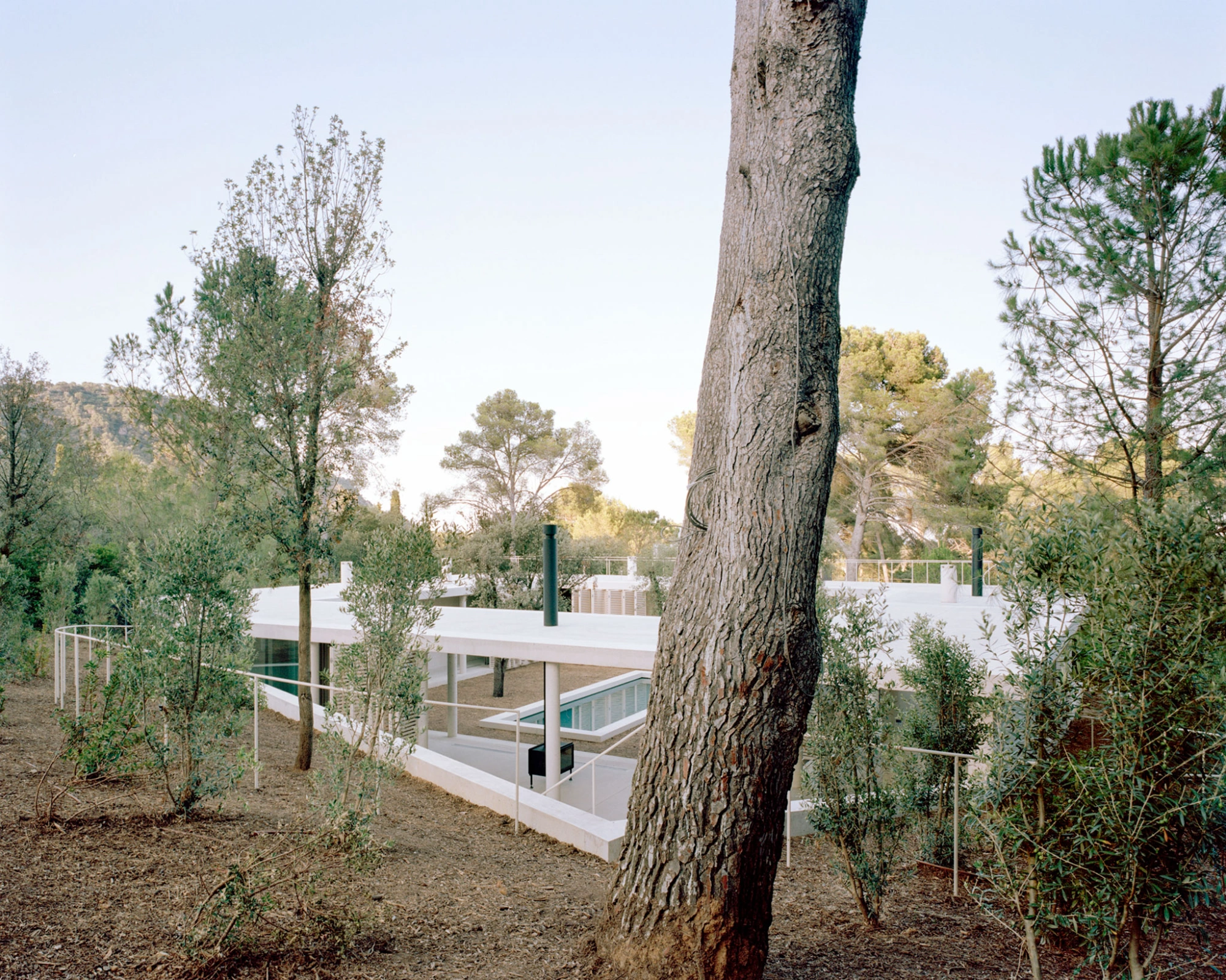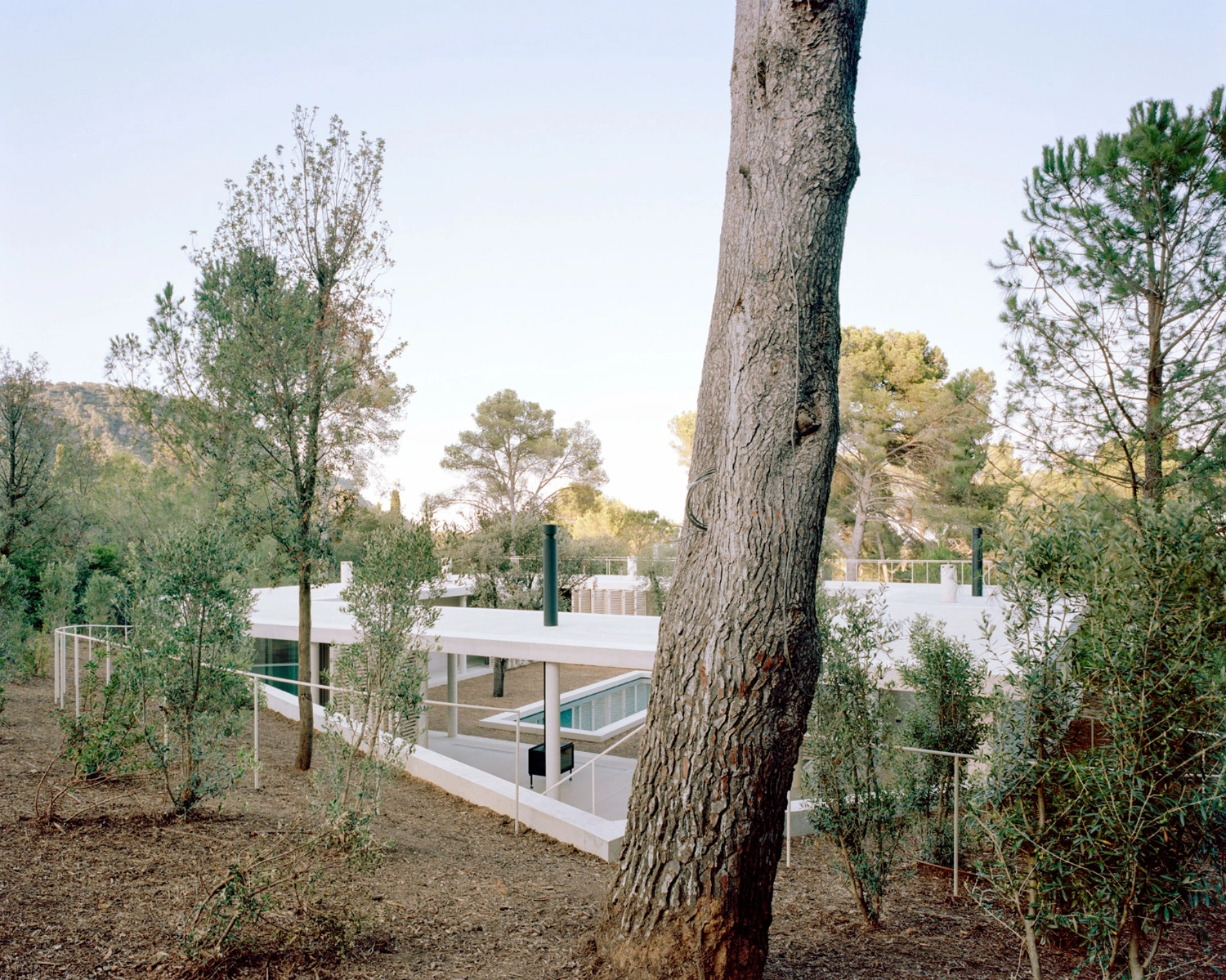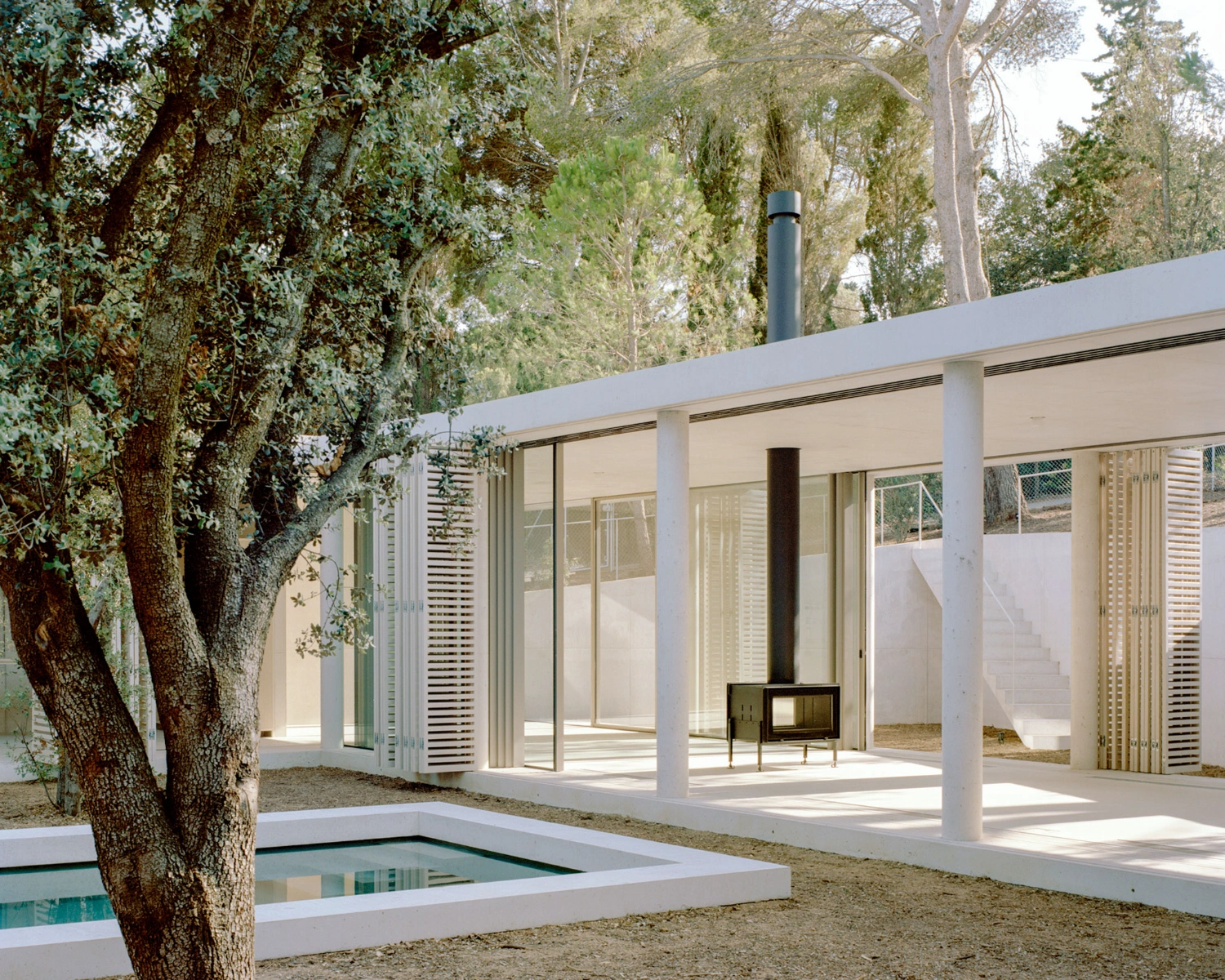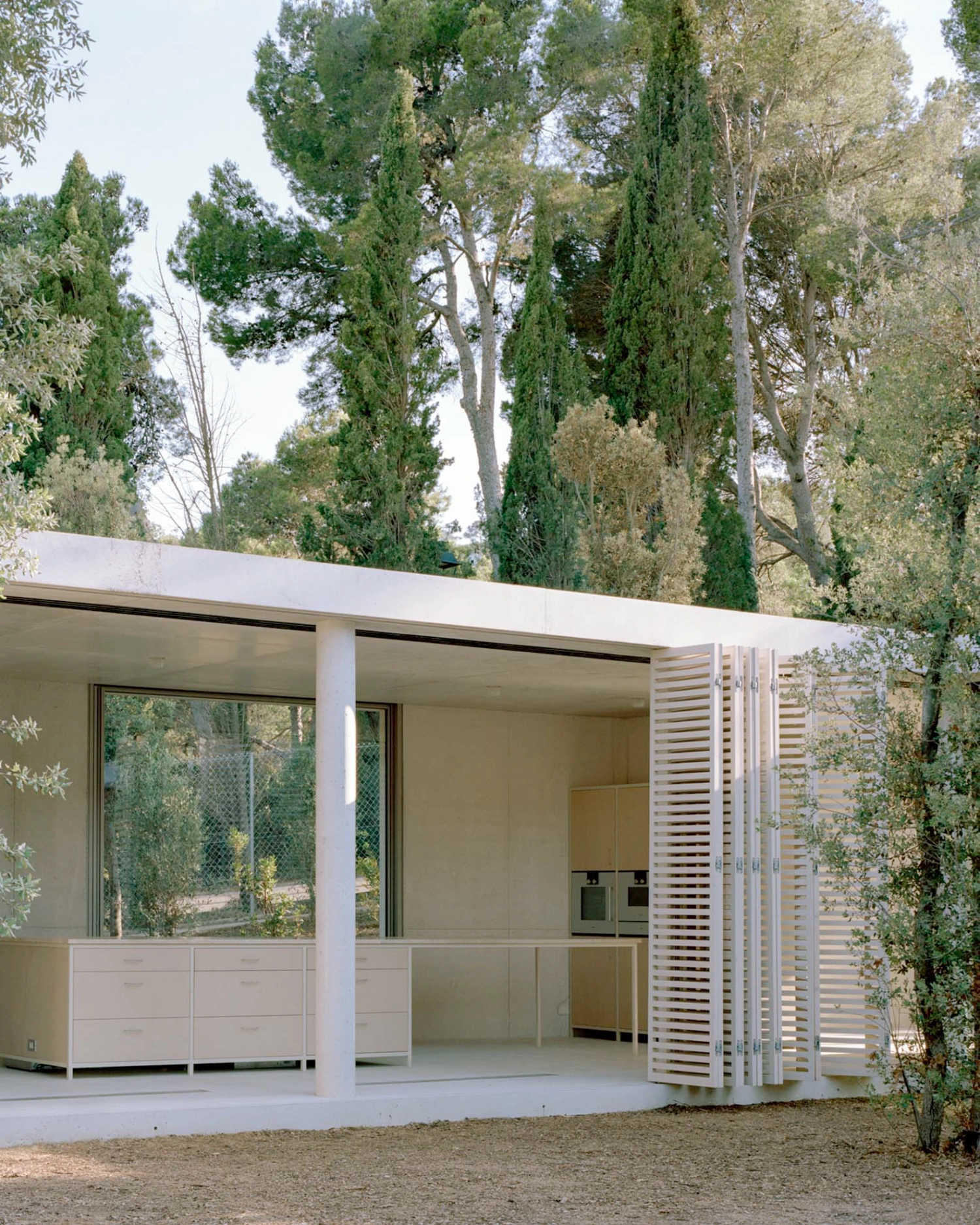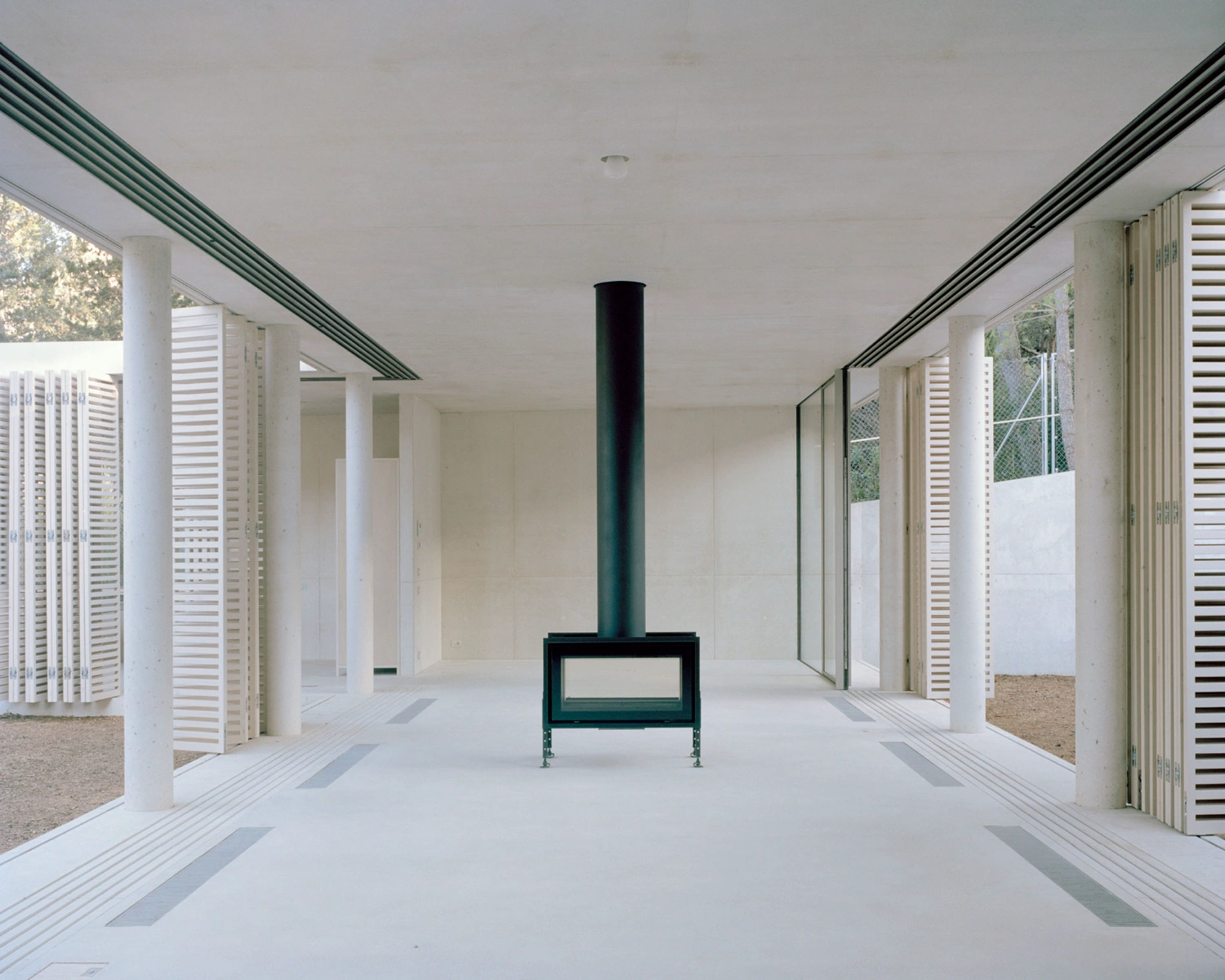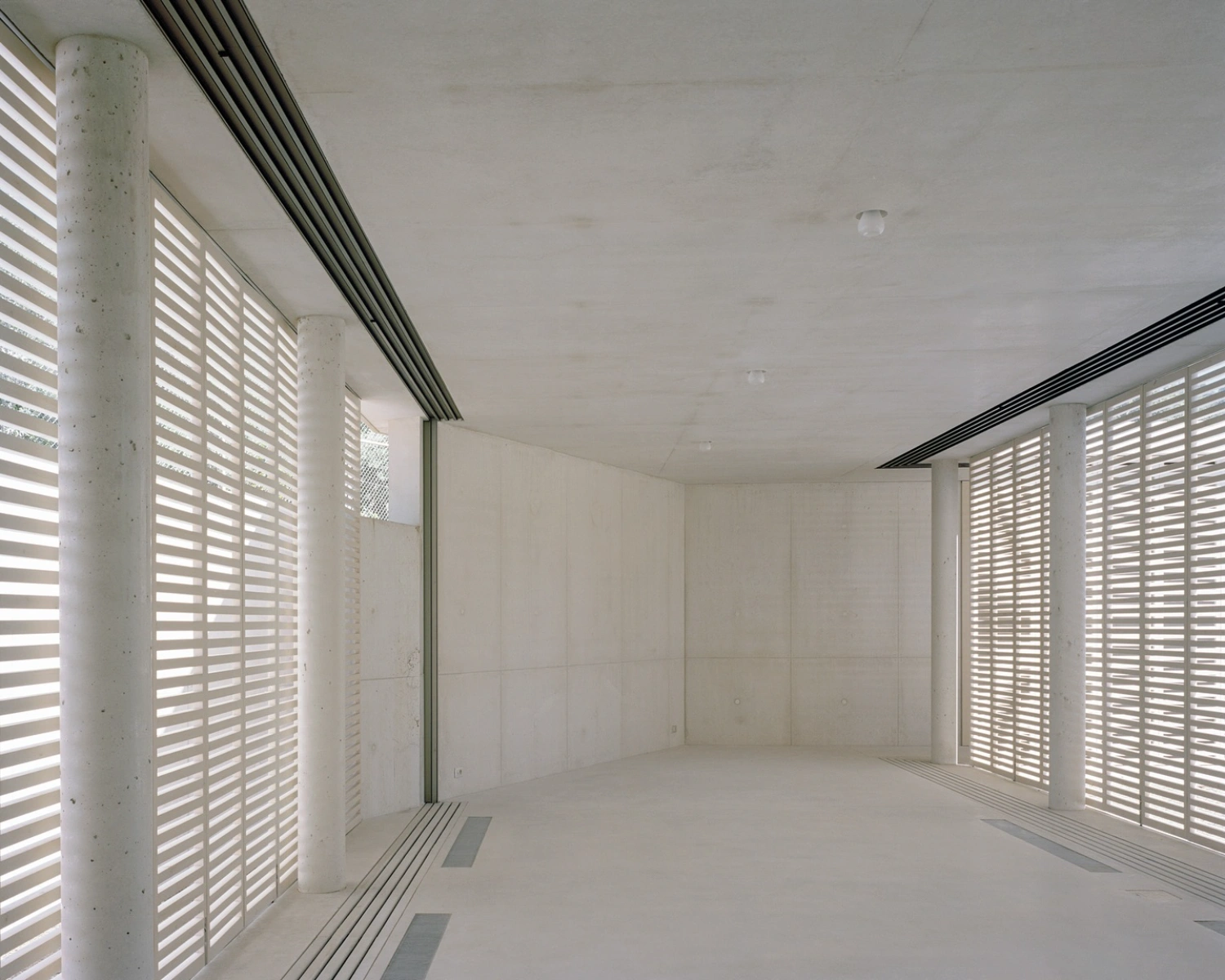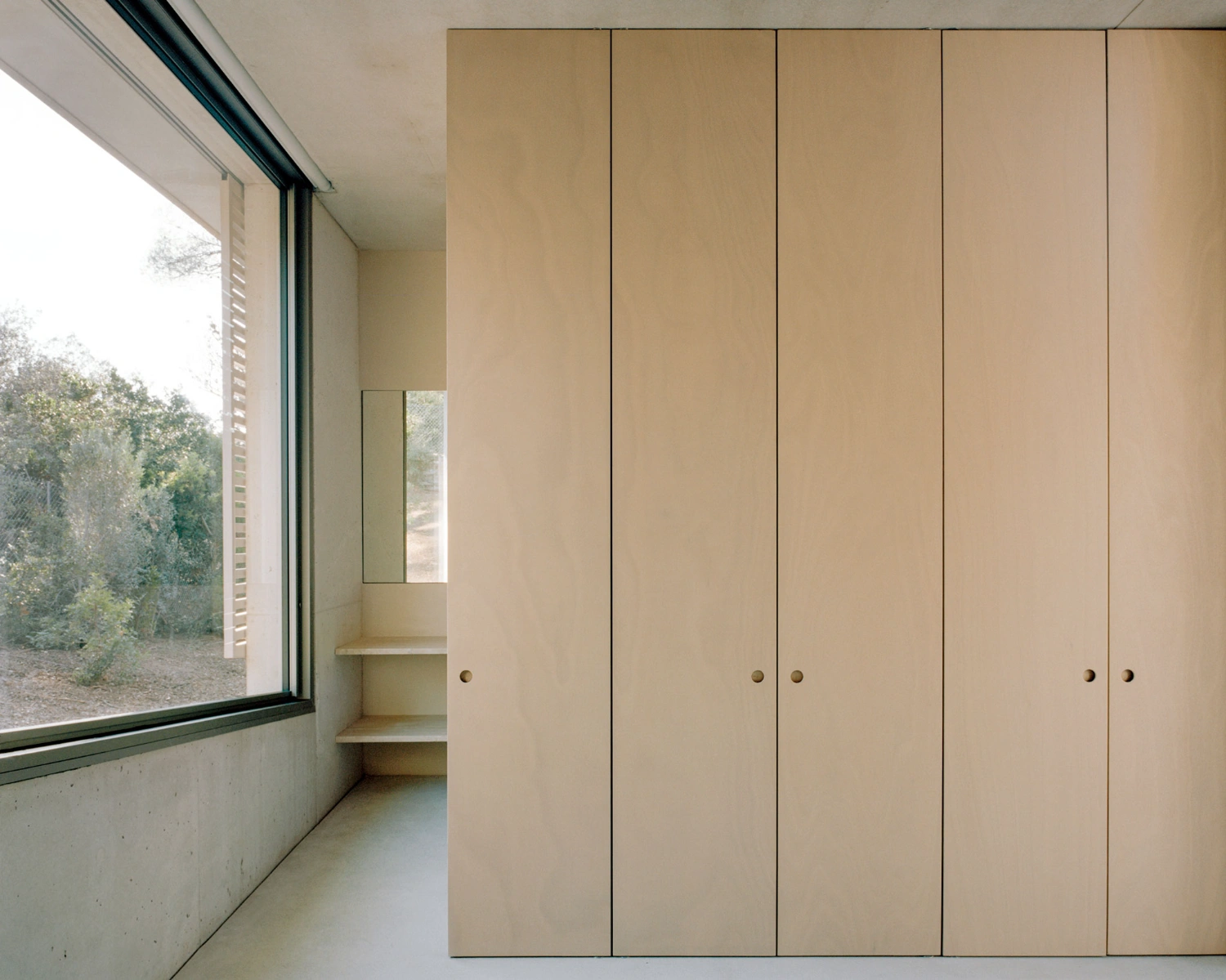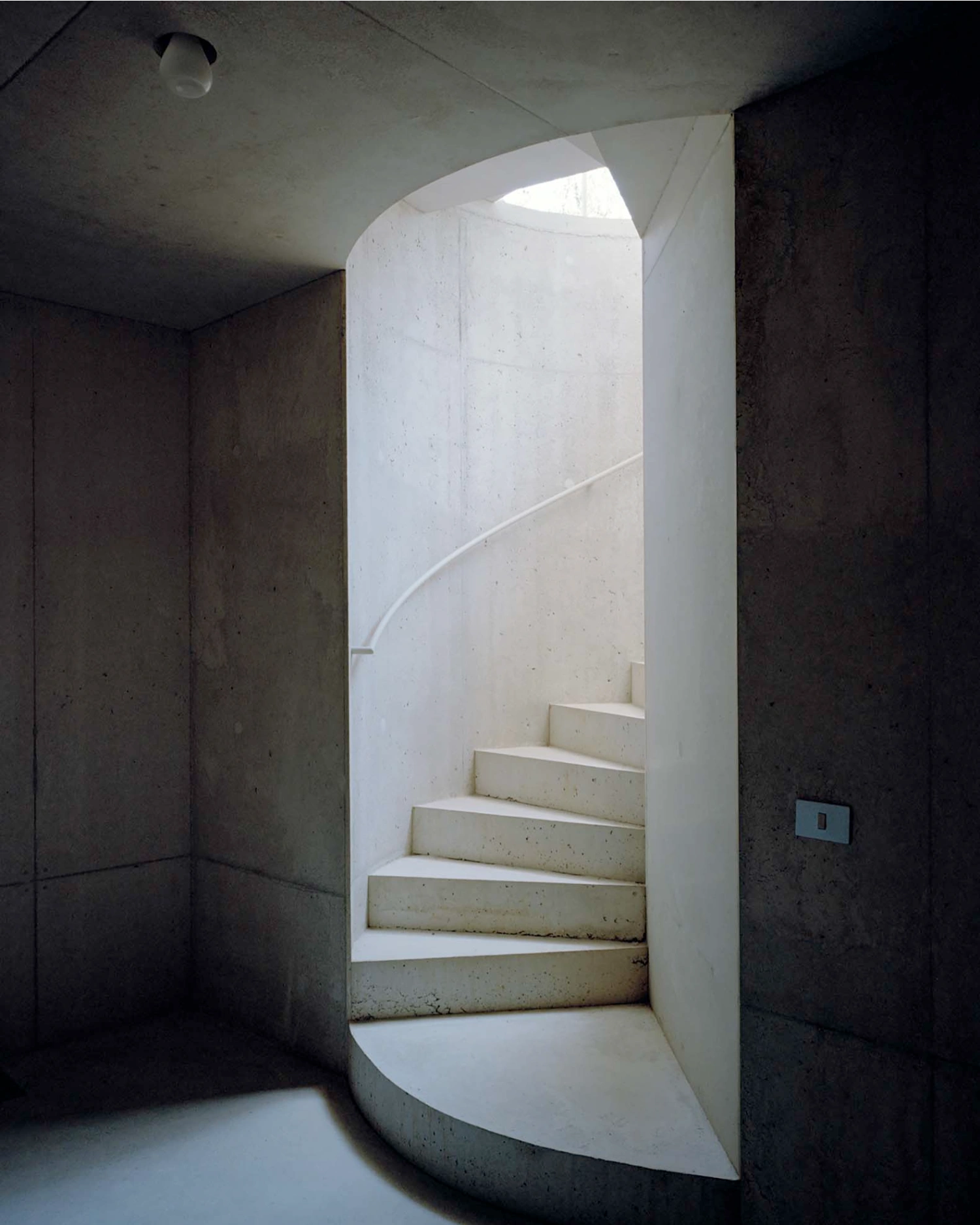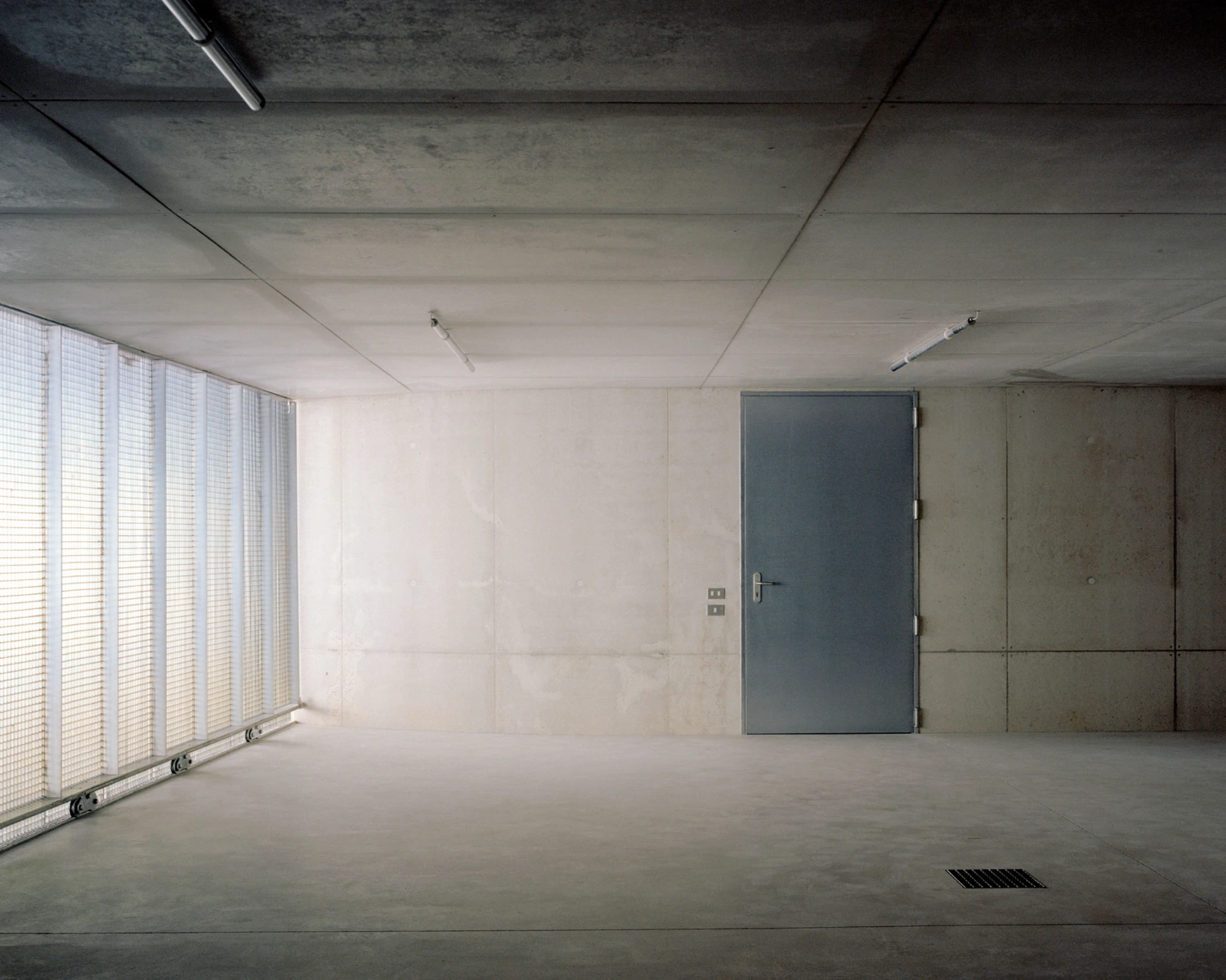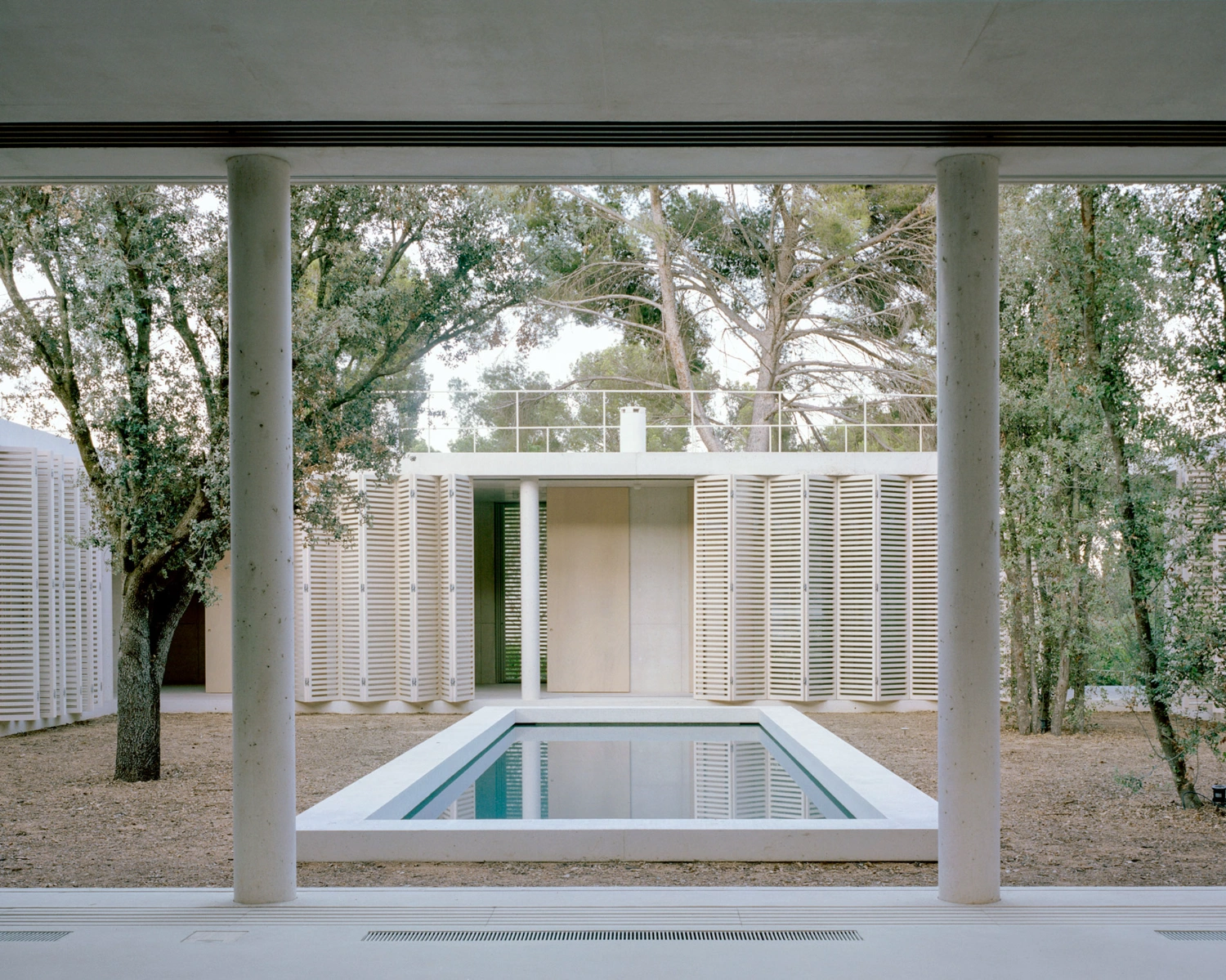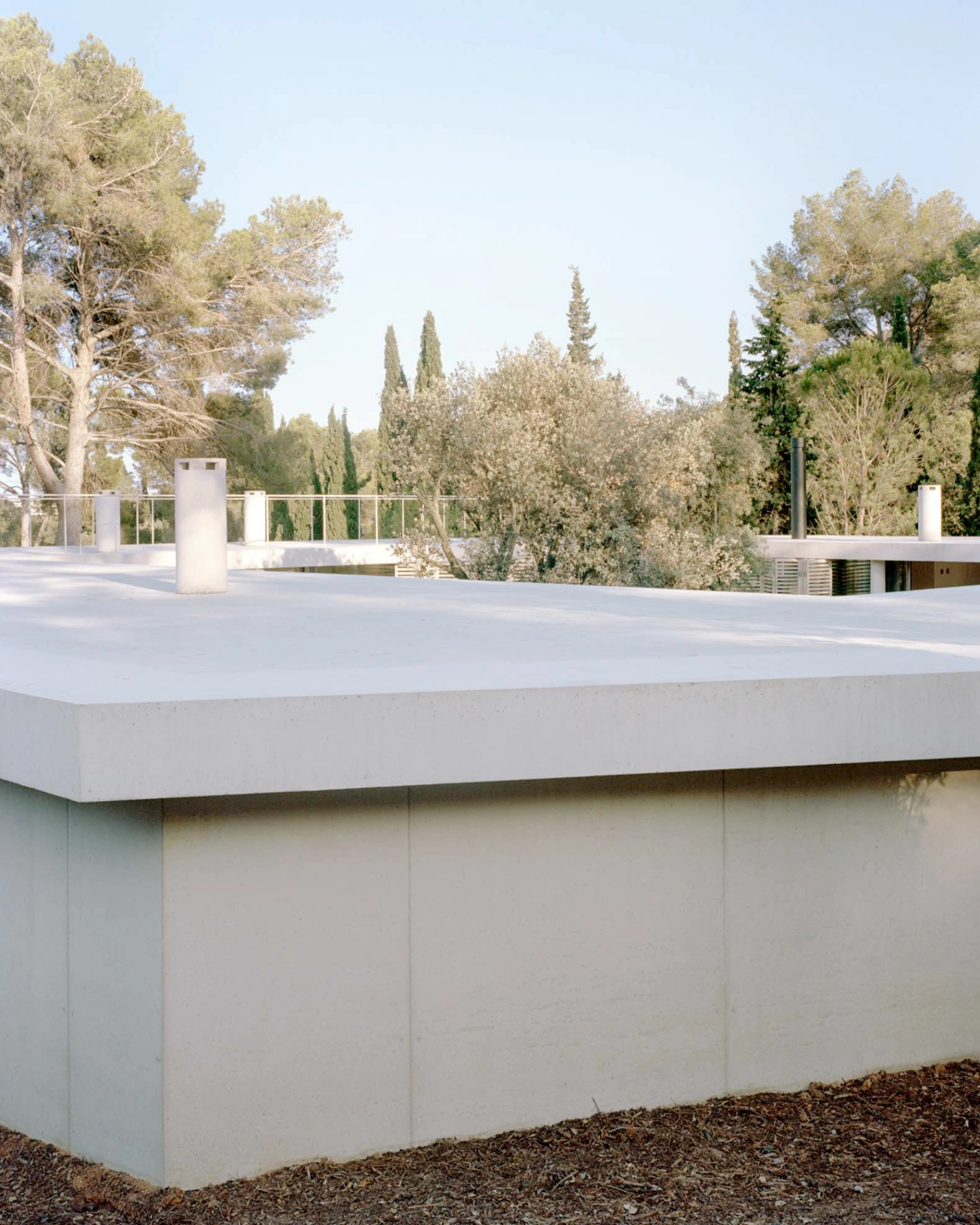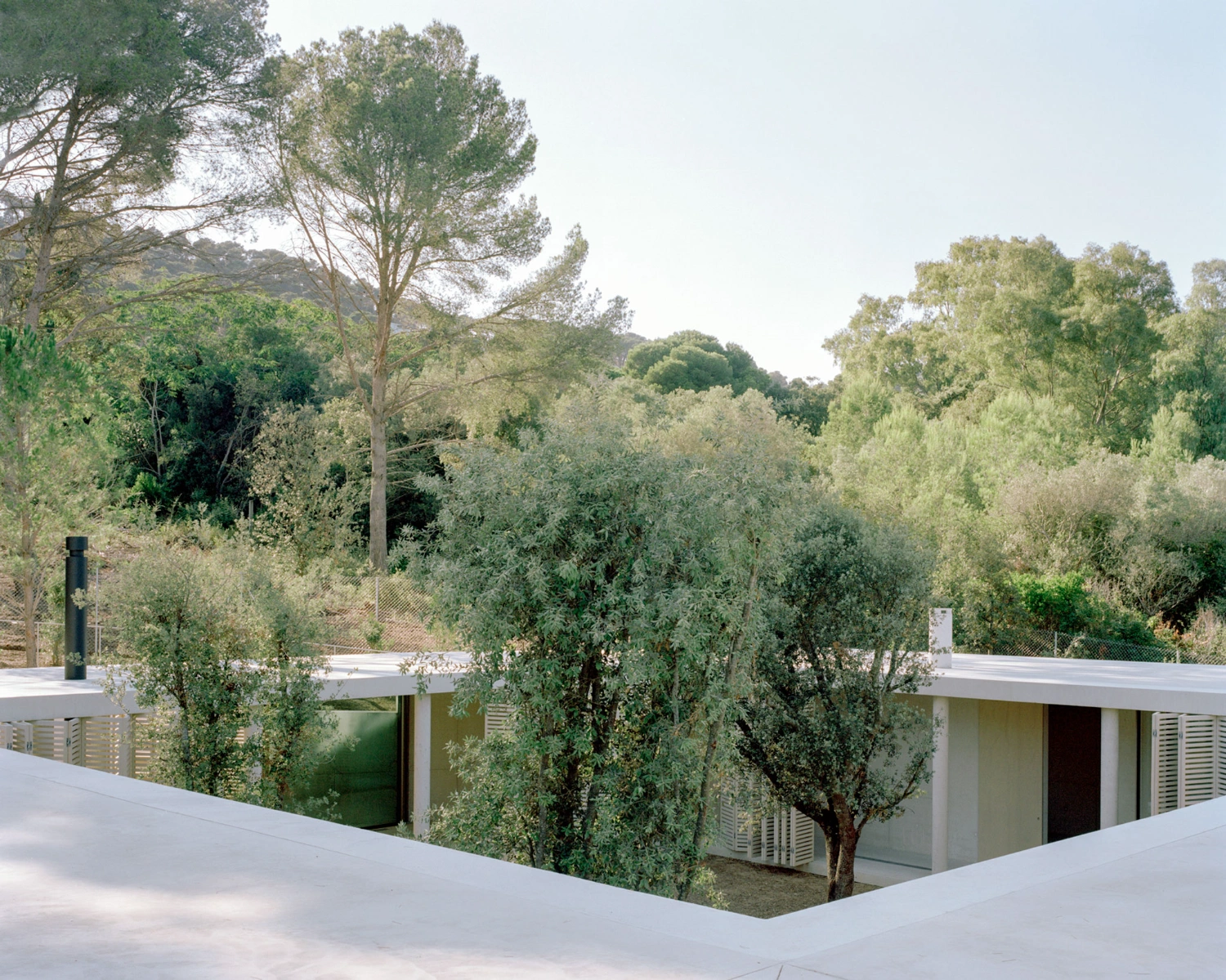Patio House in Costa Brava designed by Barcelona-based Arquitectura-G transforms the hillside terrain into a serene courtyard dwelling, where geometry, vegetation, and light converge in quiet equilibrium.
Arquitectura-G work has long sought to dissolve boundaries between architecture and terrain, and here that pursuit reaches an elegant clarity. Rather than impose a form upon the irregular site, the architects allow the contours to dictate a subtle choreography of spaces—a home organized around air, shadow, and the slow cadence of movement through courtyards.
The project unfolds around a perfect square—15 by 15 meters—anchored by a small reflecting pool and three trees. This courtyard is both stage and void, the spatial and emotional center of the house. Twenty slender columns frame it, creating a cloister-like periphery where circulation and inhabitation blur. The architects transform the colonnade into a mutable threshold: sometimes a corridor, sometimes an outdoor living room, always a porous filter between shelter and nature.
Half-sunken into the slope, the dwelling negotiates its exposure with a deft use of wood and slatted screens. These panels regulate light and wind, turning façades into breathing membranes that open entirely toward the courtyard. The roof—a simple, planar sheet—floats above the colonnade, thin and precise, its horizontality emphasizing the fluid relationship between the built and the organic. Seen from above, the structure reads as a geometric clearing amid dense vegetation, a domestic enclave camouflaged in restraint.
Inside, the architecture’s rhythm is defined not by walls but by gradients of openness. The perimeter corridor thickens into living spaces, dissolving traditional separations between interior and exterior. A circular staircase, cutting through the roof, binds the levels in a quiet vertical gesture, extending the project’s logic of simplicity and continuity.

